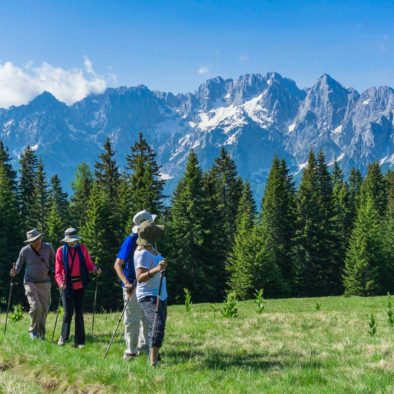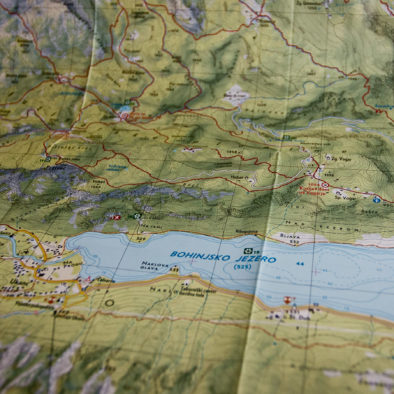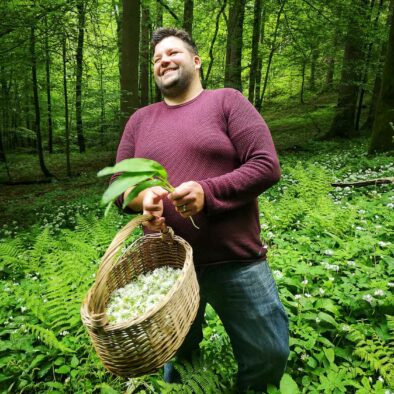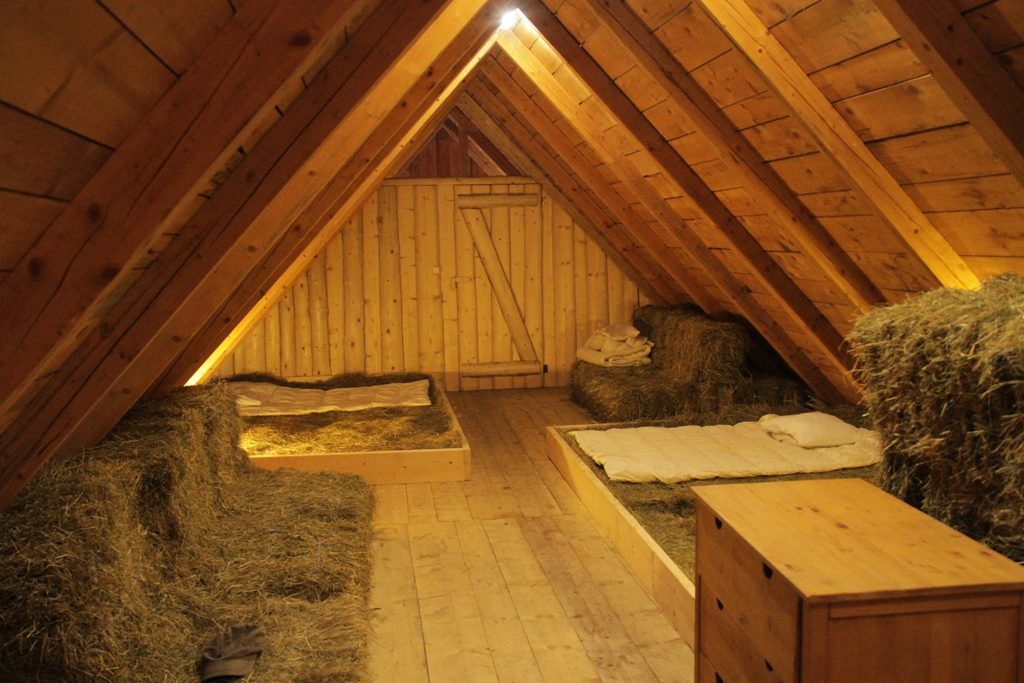Anytime is best to visit Slovenia. Okay, so I know that doesn’t help answer your question. So let’s break it down a bit. The best time to visit very much depends on your reason for coming. What is it you want to do? What do you want to see? Is the weather important? Do you like hot or cool weather? Do you want to experience the seasonal colours? Are you looking for winter or summer activities? Would you prefer to avoid the peak tourist seasons? Think about this and how you would like to spend your time in Slovenia and then consider which time of year is most suitable.
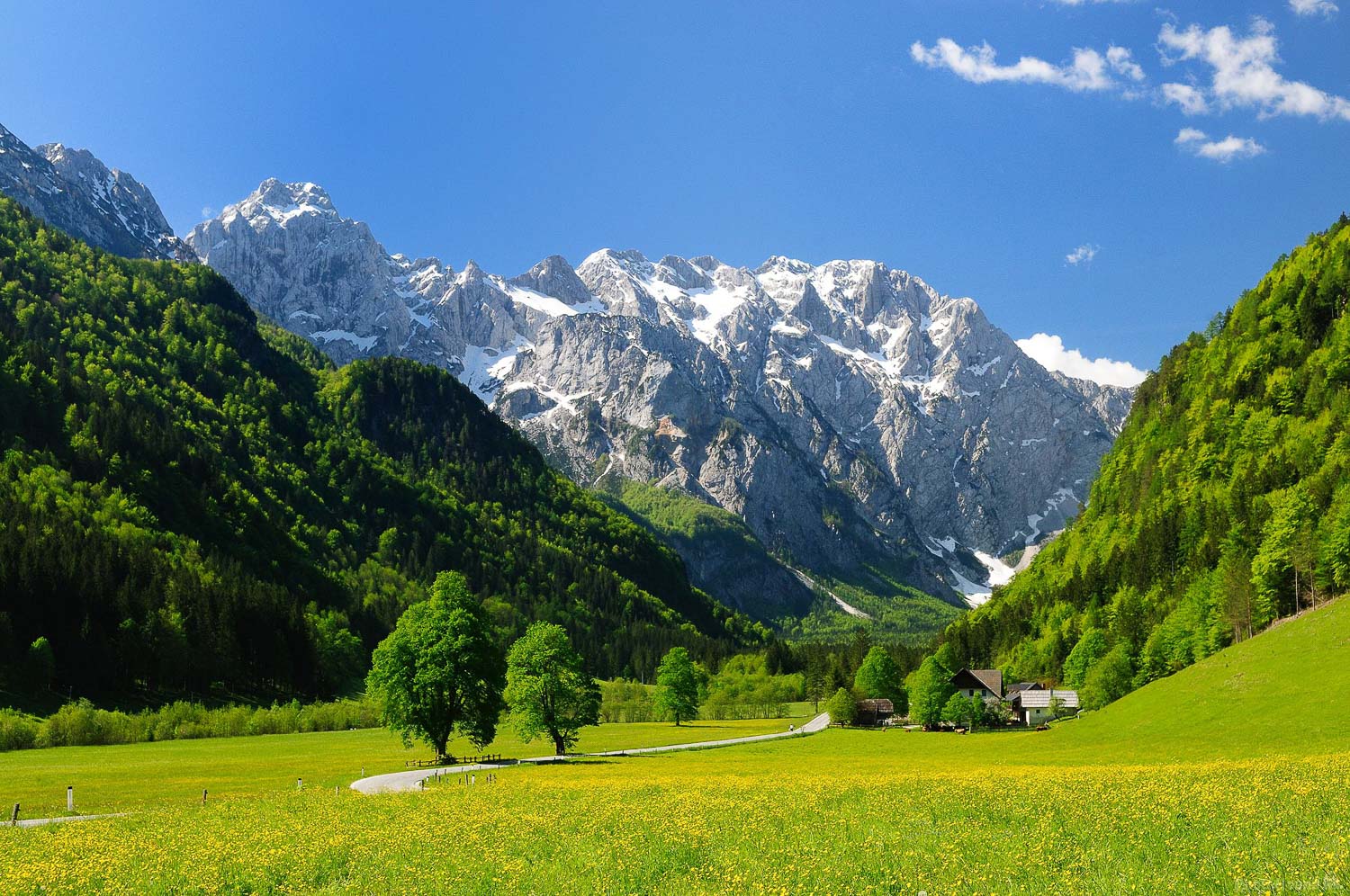
Read next: Hiking in Slovenia
The Seasons in Slovenia
Slovenia is blessed with four true seasons and each season is special of course. However, in my opinion the best time to visit Slovenia is during the seasonal transitions; when winter turns to spring, spring to summer and…. Well, you get the picture. So in this article rather than bleat on about the seasons themselves, we are going to look at the transitional months and what they have to offer in terms of weather, conditions and things to do.
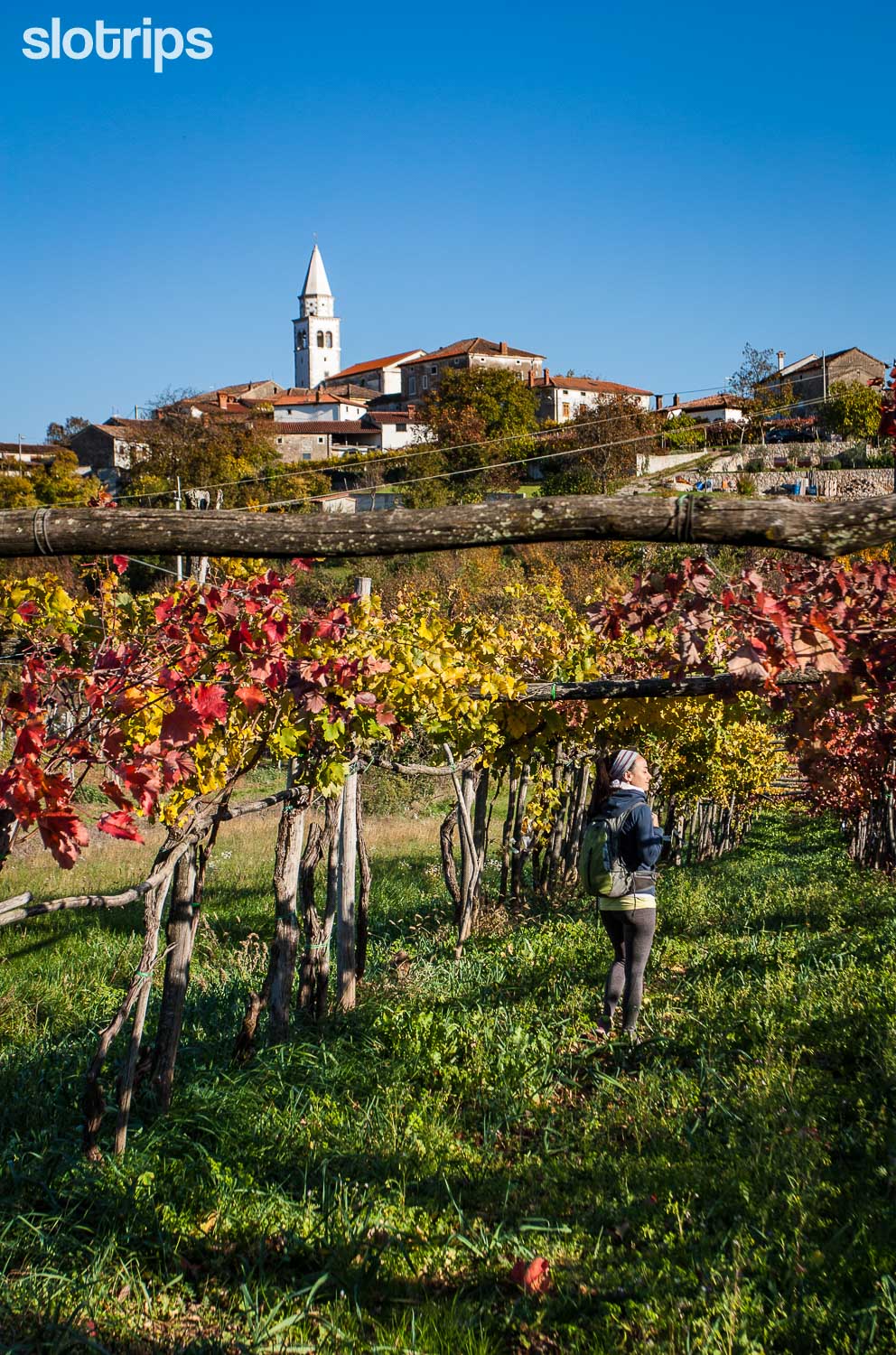
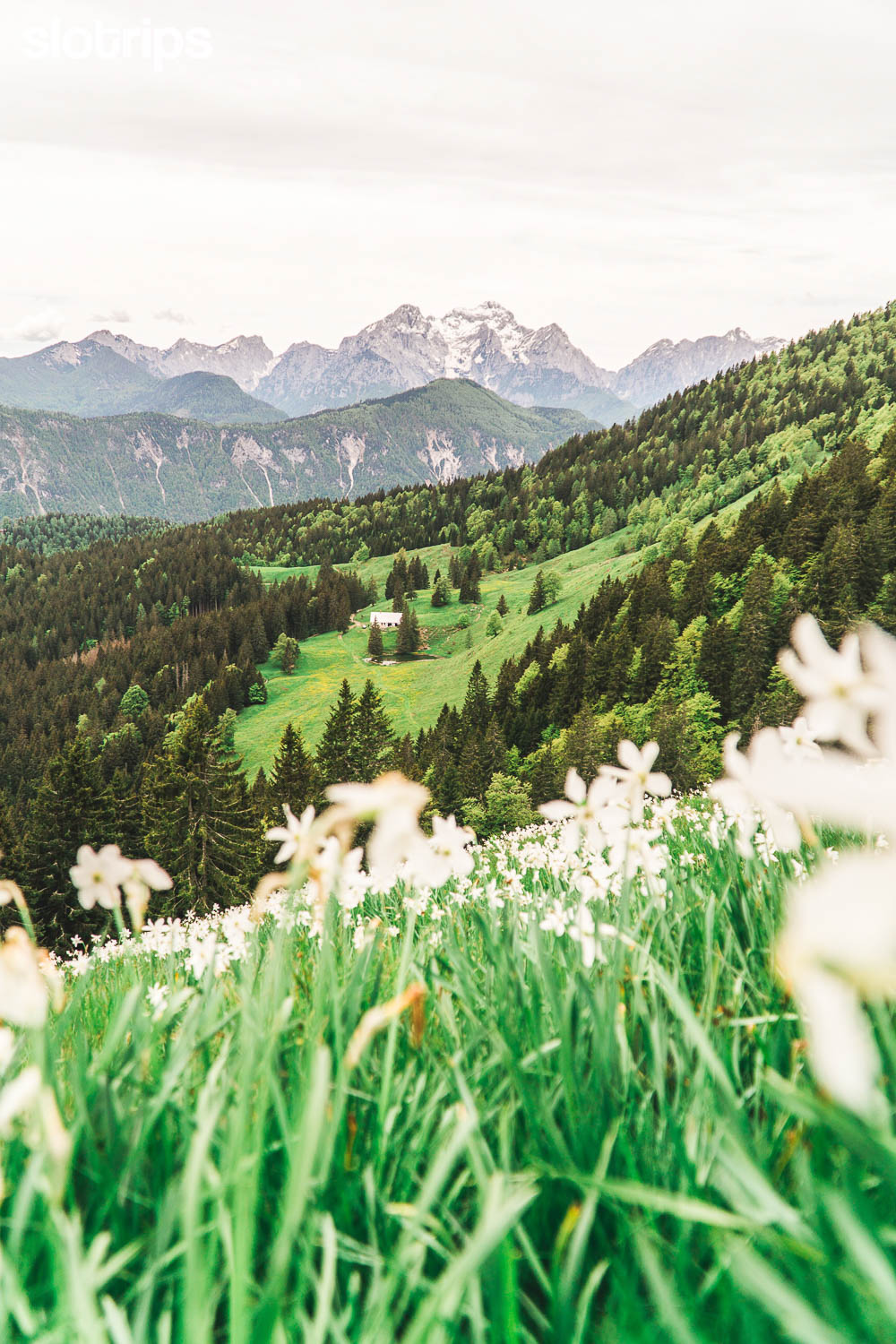
Slovenia in January, February & March
Winter activities & skiing
The first quarter is often overlooked. That is a shame because it’s a great time when Slovenia transitions from a wintery paradise to the early flowering of spring. January often sees the peak season of the winter snow, and ski resorts are packed. As well as skiing on piste, you can also go cross country skiing and snowshoeing, or ice skating on frozen lakes. The more radical among you can even go off piste or backcountry skiing.
Disappearing Karst Lakes
These months are a great time to visit the phenomenon known as the disappearing karst lakes; Cerknica and Planina lakes in particular. These are limestone fields that fill up after long periods of heavy rain, but slowly drain away via sinkholes into the porous underworld. The period of heavy rainfall from October to December fills up these lakes. Therefore, during January and February there is usually a lot of water and it can also be frozen. Join the locals for some ice skating, hike the nearby hills and return to watch the sunset over the still, glass-like surface of the lakes.
Start of Spring
Mid February onwards is a lovely time when the snow begins to melt at lower altitudes. The terrain resembles a patchwork blanket of snow and brown earth. Amid the golden brown are the first signs of life and colour as the early wildflowers spring from the ground, such as beautiful white snowdrops, primrose and crocuses. The willow trees are the first to leaf out. It’s a glorious sight as their golden leaves sparkle in the morning or evening light. February and March also see the lowest annual rainfall and around 5 daily sun hours.
Although the snow is melting in the lowlands, the mountain peaks will most likely still be snow-covered. This a great time for hiking because as well as seeing this magical time when the landscape awakens from its winter slumber, it’s also a quiet time when the only other hikers you are likely to meet are locals.
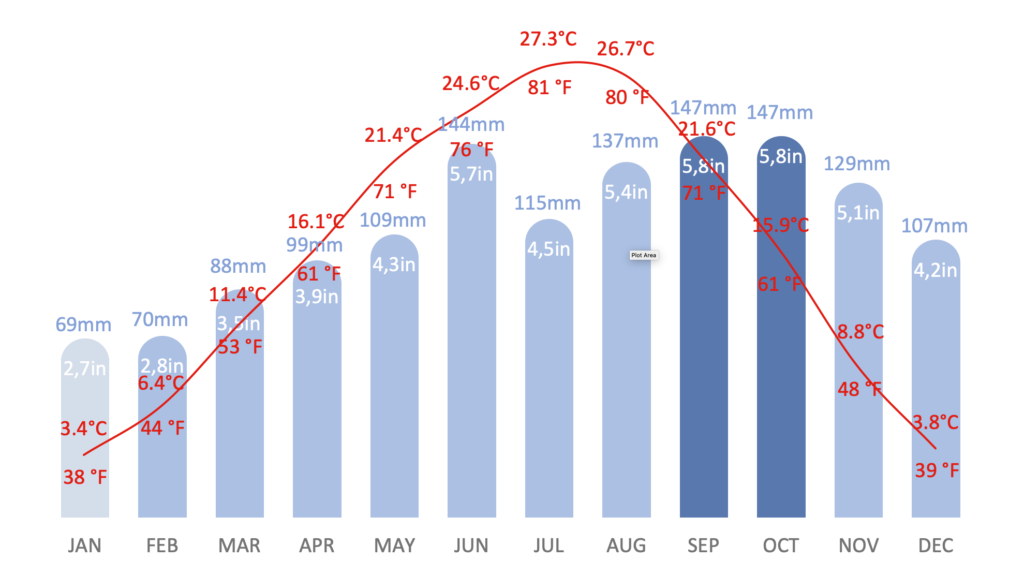
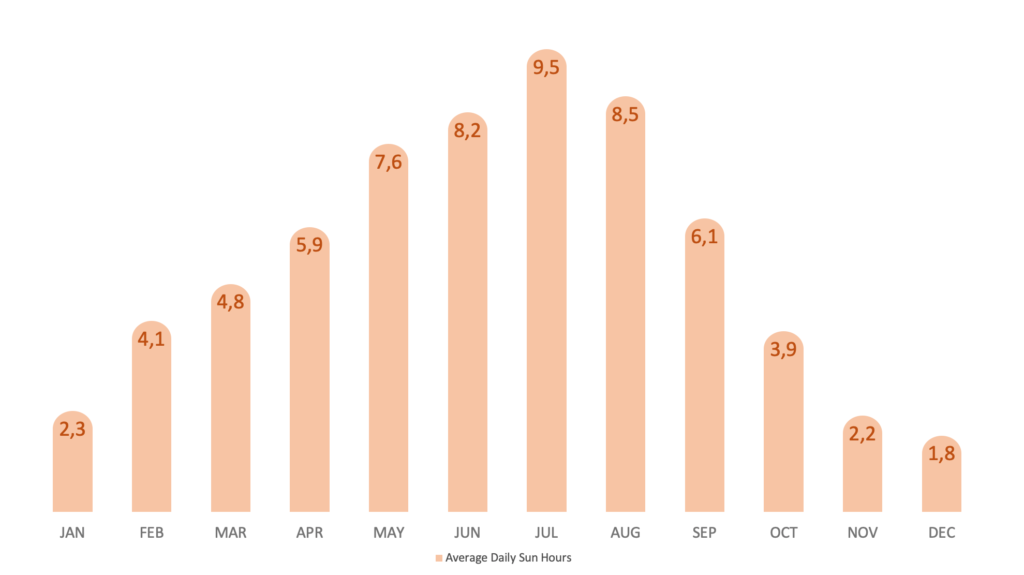
Climate chart: Ljubljana
Ljubljana has a typical continental climate with hot summers and winter temperatures close to zero. There is no pronounced rainfall peak and it can rain any time of the year, however, the rainfall minimum is in the first quarter of the year. What we (the locals) hate about Ljubljana’s weather is the thick layer of fog that stays above the town in winter and steals our sun. On average we only get around 2 hours of sun per day from November to January!
Read next: Best time to hike in Slovenia
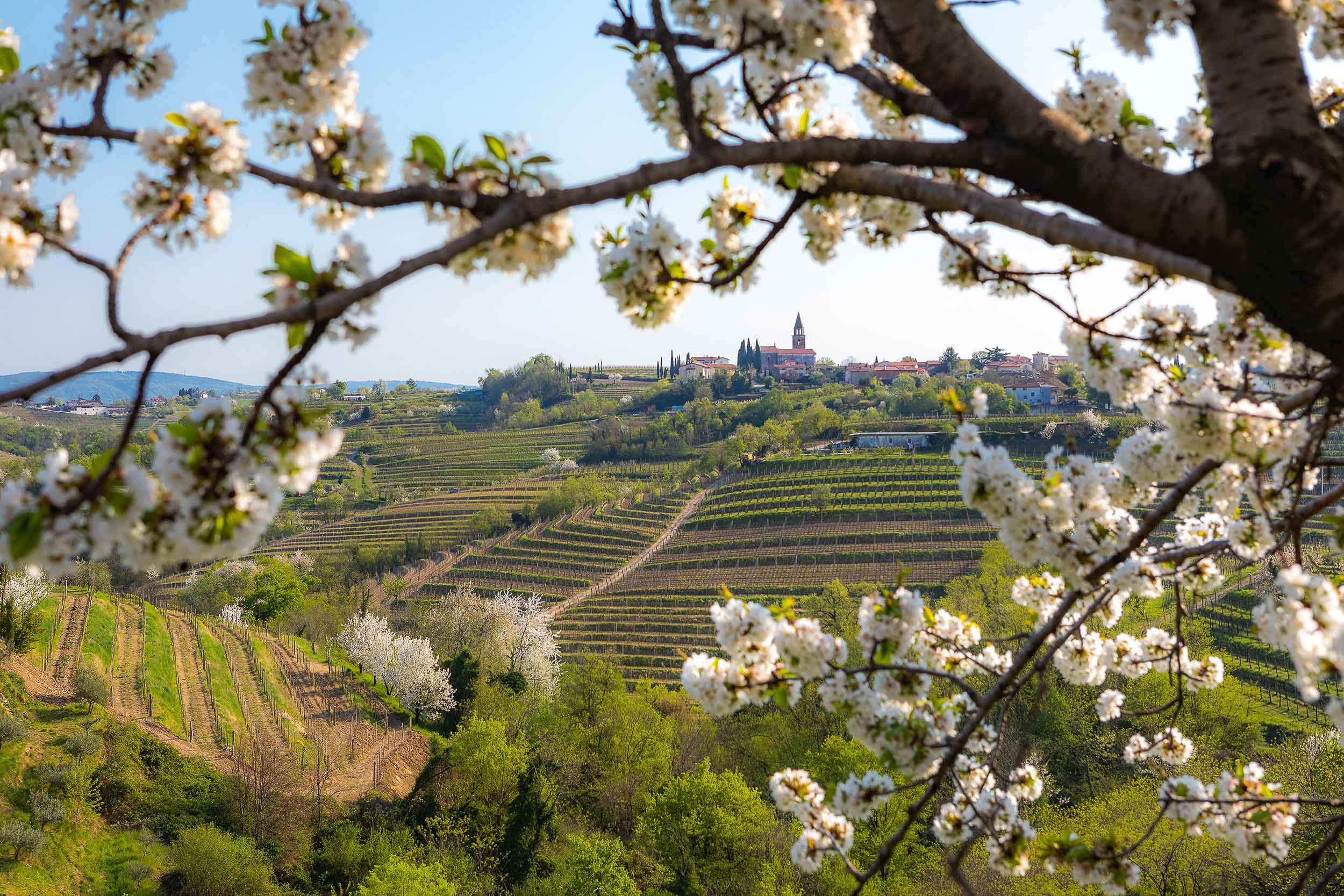
Slovenia in April, May & June
Warm, Not Hot
April to June is perfect for those who love the warmth but not the heat. It’s the time when Slovenia transitions from spring to summer. During these months you will see the most dramatic changes in the landscape and weather. In April things begin to warm up after the cold winter period and snow starts to melt on the mountaintops, feeding the abundance of waterfalls, rivers and filling up the lakes once again.
The spring colours truly come alive in April, as the rest of the trees start to blossom, from cherry trees to apple orchards. The grass begins to wake up and rejuvenate after being frozen all winter. The weather in April and May in Slovenia is probably at its best.
Photographers Paradise
Daytime temperatures are a comfortable 15 – 25 degrees centigrade on average. Mornings are chilly, but if you wrap up and head out to the lakes and mountains you’ll be greeting with a fairytale landscape enshrouded in low lying mist covering lakes, layering the valleys and hugging the mountaintops. This is also one of the best times to visit Lake Bled because the mist envelopes the island church and as the morning sun appears above the horizon the mist burns away and the entire lake appears to be on fire. The best place to view this surreal moment is from Ojstrica or Mala Osojnica viewpoints, just a short hike up from Zaka on the western side of the lake.
May & June: Our Favorite Months in Slovenia
The weather in Slovenia in May is nothing short of perfect for those wanting it a little warmer. While there is an average rainfall of 100-200mm in the alpine regions, it usually comes in the form of scattered showers which you can avoid by diving for cover somewhere and waiting it out. It’s worth the wait because the light as the rainclouds break up after is phenomenal.
May to June is an amazing time and perfect for hiking and cycling. As you traverse the foothills of the Alps or stand upon the hilltops and mountaintops, you are greeted with a hundred shades of green. This time of year sees the richness of spring becoming summer, as the dark greens of the non-deciduous trees mix with the other shades of the deciduous trees as they begin to return to life. In the Soča and Bohinj Valleys torrents of water from the snow melting on the mountain peaks thunder down the mountainsides and feed the rivers and valleys. You can see here why the Soča Valley was chosen as the location for the movie, the Chronicles of Narnia.
May to June sees an average of 6-7 daily sun hours, and around 200mm of rainfall; however as stated this is usually in the form of short bursts of heavy rain rather than long periods. School holidays haven’t started yet and you will have most of the sights and trails pretty much to yourself.

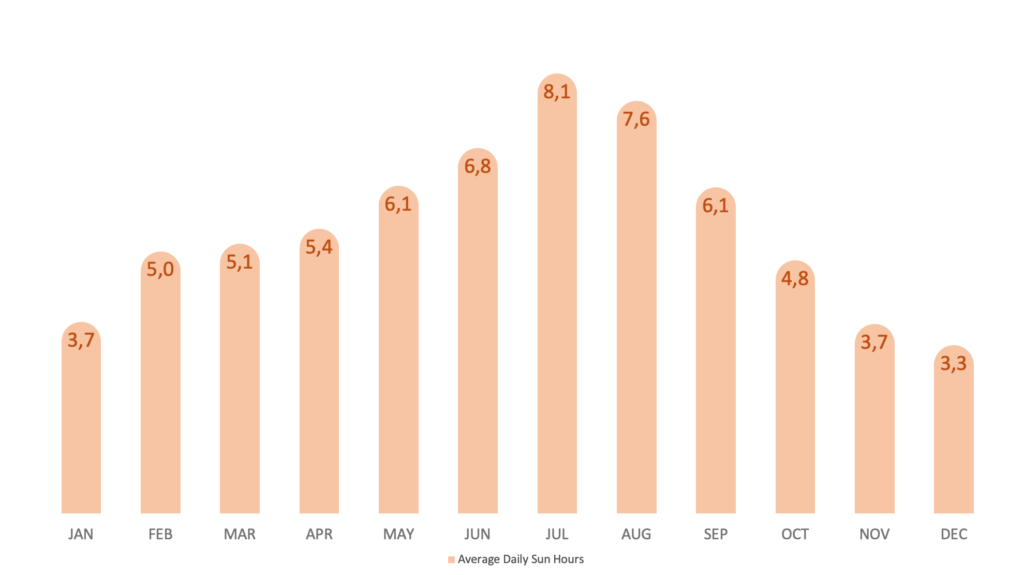
Climate chart: Bovec (Soča Valley)
The town of Bovec (or the whole upper part of Soča Valley) is often referred to as ‘Slovenia’s outdoor & watersports mecca’. In some places, it does get busy in July & August due to the school holidays. Honestly, it is also the best time to enjoy the turquoise color of the Soča River and its tributaries and swim in the cold river pools. However, April, May, June, September, and even October are great months to visit as well. Soča Valley is also one of the wettest parts of Slovenia with rainfall peaks in October & November.
Best active experience in the Soča Valley: Walk, bike & raft along the Alpe Adria Trail
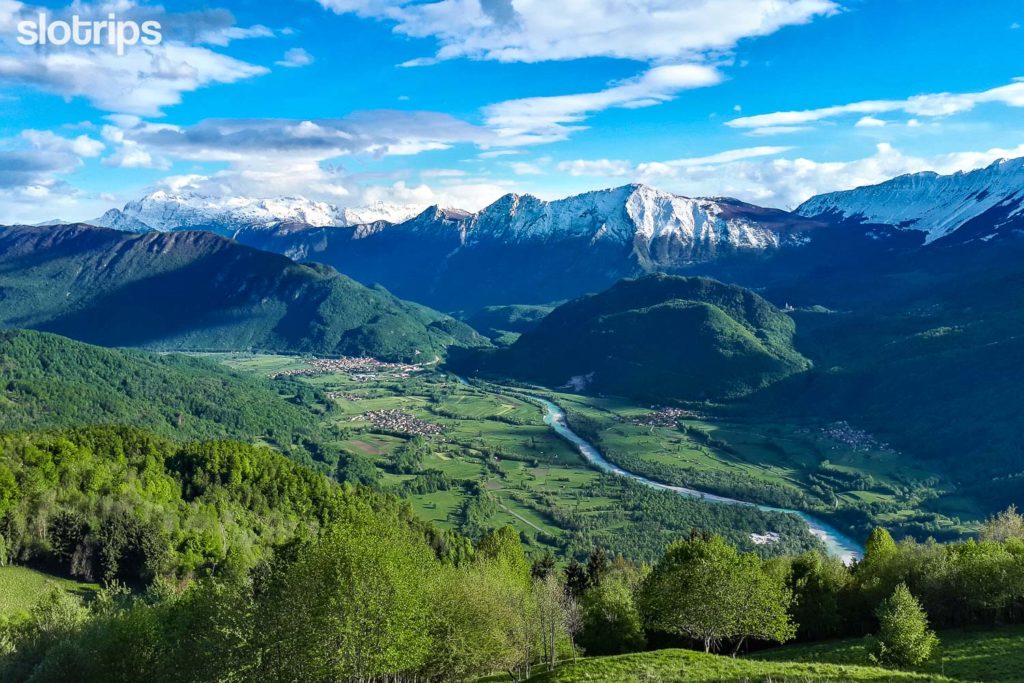
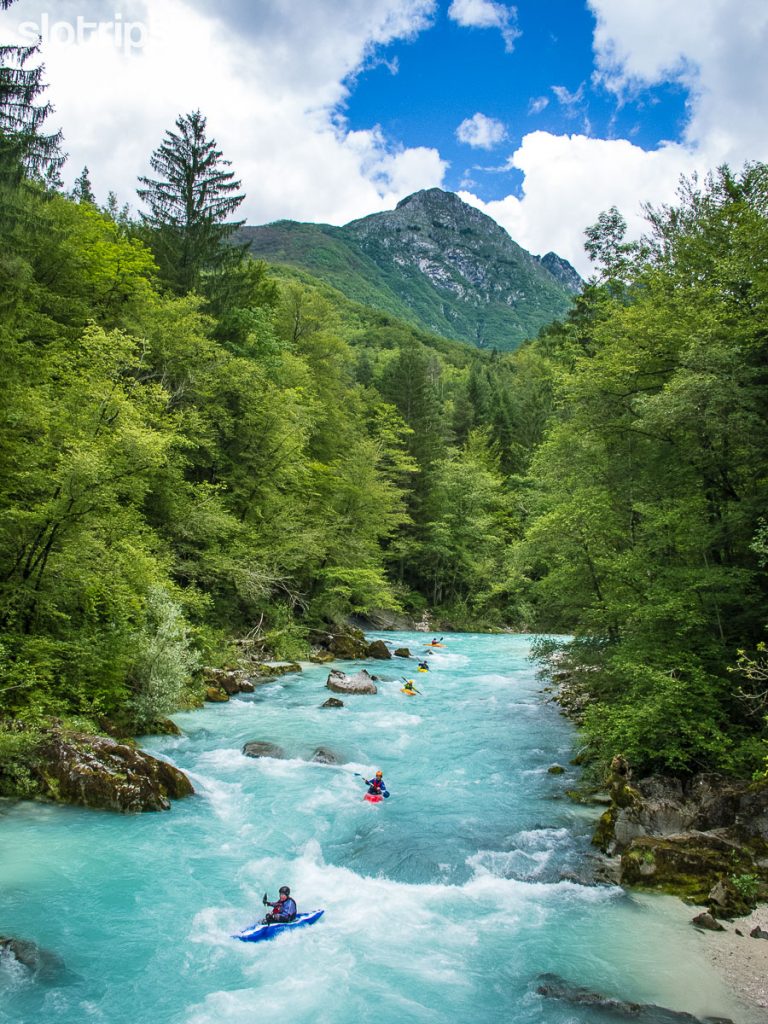
Slovenia in July, August & September
Summertime
Who doesn’t love those lazy, hazy, crazy days of summer? Well, of course, this is the peak of Slovenian tourism and also the hottest time of the year. If you love the heat and don’t mind the crowds, then this is the best time to visit Slovenia. July is the hottest and sunniest month with temperatures exceeding 30 degrees. The coast sees an average of 10 sun hours daily, the alpine regions vary from 8-9.
The Slovenian Coast
The sun worshipers will enjoy the Slovenian coast at this time. While it may be short, it offers just as much beauty as its more popular neighbour and, dare I say, is much more interesting. Many of the Slotrips hiking and cycling tours end at the coast (for example, our Mountains to Sea trip), so you can dip your tired feet into the warm Adriatic Sea and wander slowly through the cute little harbour towns of Piran and Izola and admire their Venetian architecture.
For swimming Portorož and Piran is considered as the Slovenian Riviera, but another good place to swim is Strunjan where you’ll find fewer tourists and more Slovenes. Plus you get a great view across to the church of Saint George, which is even better at sunset.
The Alps
If you prefer to avoid the heat and have a hankering for adventure then the north will beckon you with its cooler alpine air and alpine lakes. This is probably the only time of year you can comfortably swim in Lake Bled and Lake Bohinj. Also, it’s the perfect time of year for adrenaline water sports such as: canyoning, rafting and kayaking. There are many other summer activities to whet your appetite too, such as: zip lining, rock climbing, tandem skydiving and hot air ballooning.
July and August are also the best times to go hiking in the high alpine regions of the Triglav National Park, and also to hike to the peak of Mount Triglav, the highest in Slovenia.
September: Another Favourite Month
September is the best time to visit Slovenia if you want the warm sunny days without the hustle and bustle of the crowds. While there is a sharp increase in rainfall on the coast, there is only a slight increase at Lake Bled and around. As in April and May, the mornings and evenings become a little chillier but the average temperature during the day is around 20 degrees centigrade.
September also starts to see the first subtle transition from summer to autumn. There is a golden glow over the landscape, which is of course enhanced by the late evening or early morning sunlight. Late September is the best time to visit Slovenia if you want to see the first glimpse of autumn while still enjoying the warmth of the summer sun.
Our favorite summer trips: Discover Slovenian Alps, Best of Alpe Adria Trail, Mountains & Lakes Hut-to-Hut
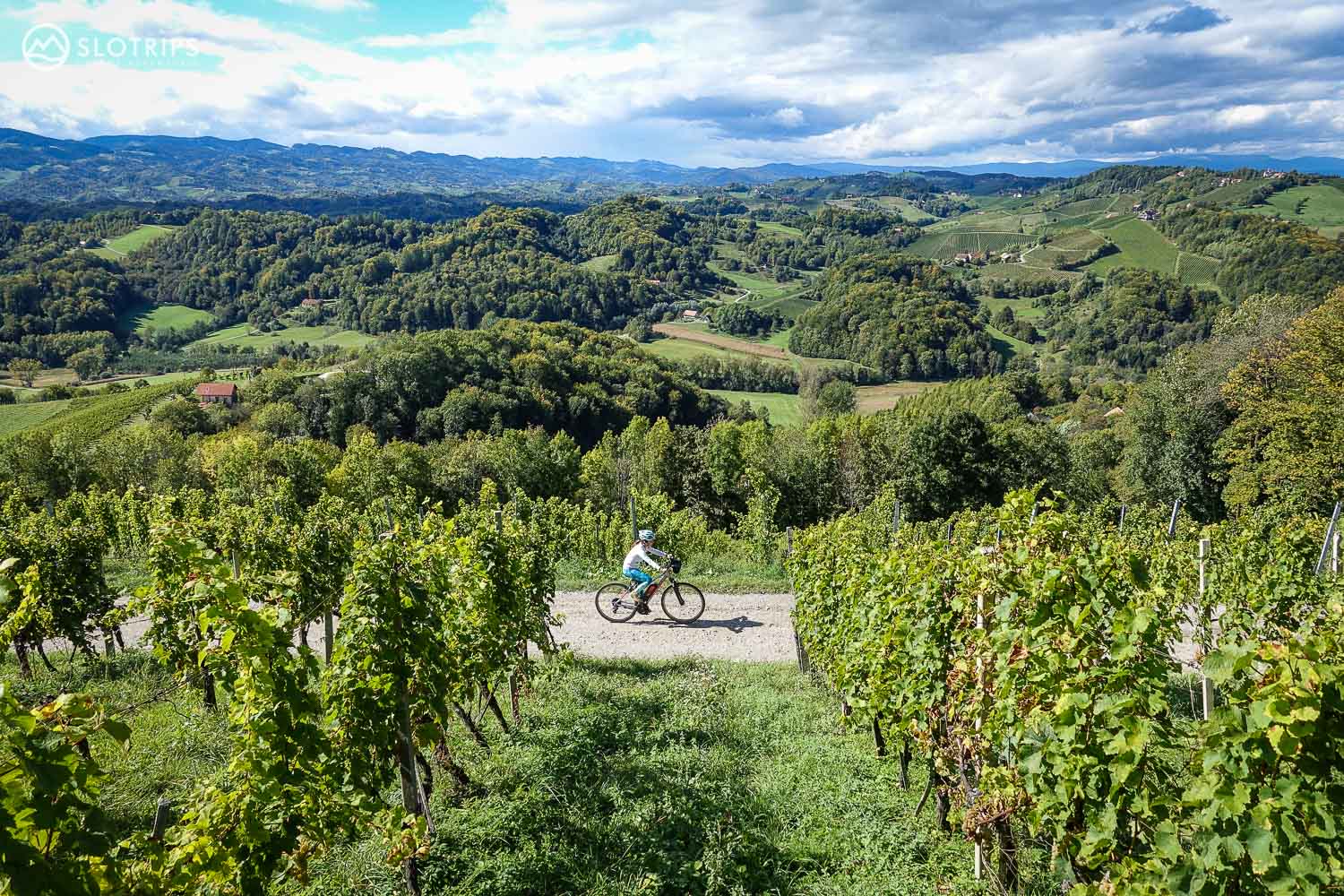
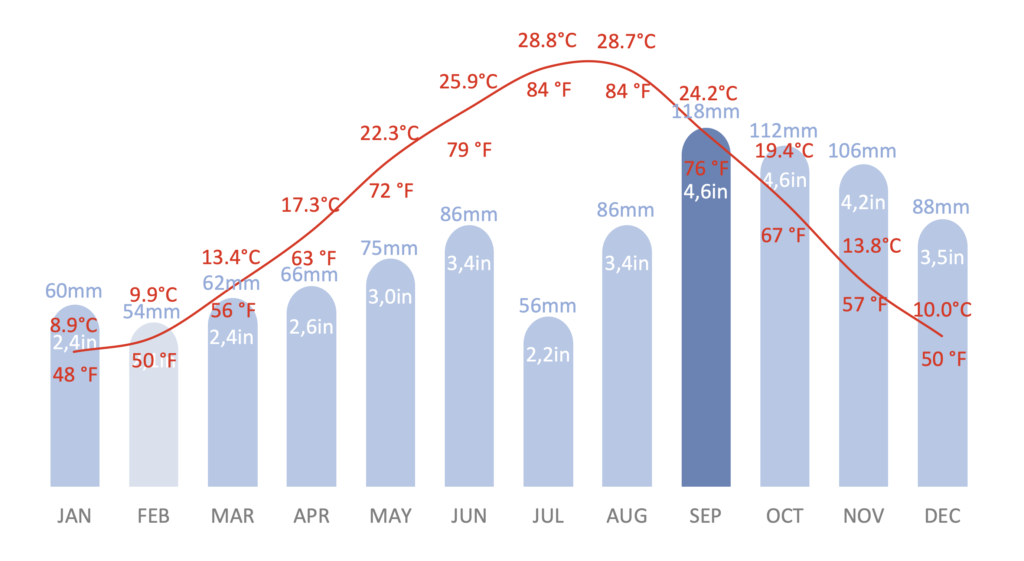
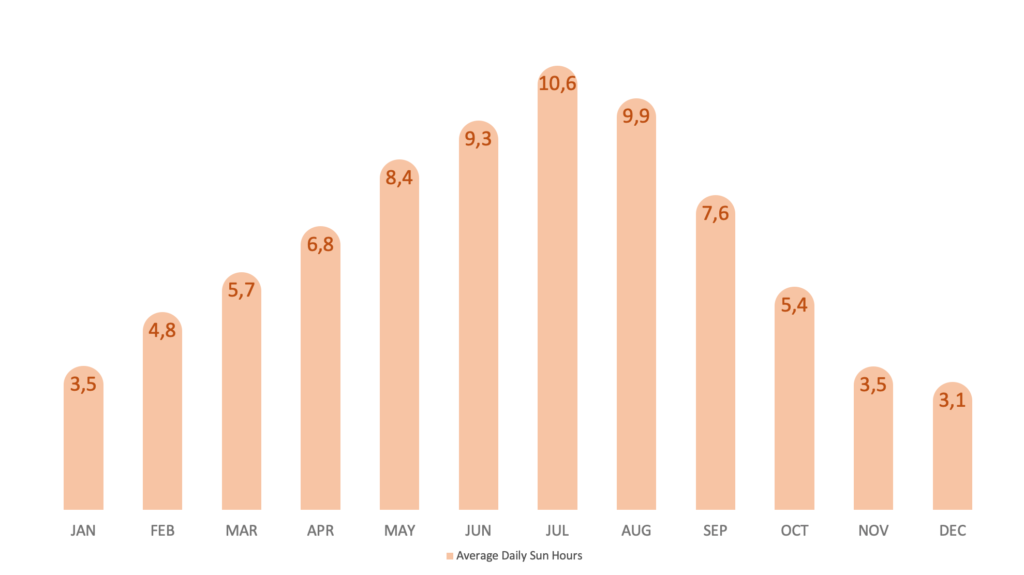
Climate chart: Piran (the coast)
Slovenian coast sees little rain from January to August. Summers are hot and winters are mild – excellent climate for olive trees, grapes, and all sorts of Mediterranean fruit and vegetables. Summers are mostly too hot for any physical activity, but Spring (March – June) and Fall (September – October) are great for hiking and cycling all over south-western Slovenia. Check our Alpine Heights & Coastal Delights trip.
Slovenia in October, November & December
Fall Colours at Their Best
Autumn in Slovenia rivals even the most famous locations when it comes to autumnal colours. It can be relatively long-lasting or short-lived. On the high plateaus, strong winds can quickly blow away the colourful leaves not long after they have peaked, so timing is of the essence. This is the best time to drive, bike or hike the Vršič Pass that takes you from Kranjska Gora over Slovenia’s highest mountain pass down into the Soča Valley where the alpine autumn colours are at their most splendid.
While the whole of October is great, the best time to visit is during the peak, which usually happens around mid to late October. The end of the month usually sees a lot of rain which continues throughout November.
When Must Becomes Wine
As autumn transitions into winter and the trees once again become bare and lifeless, Slovenia comes alive in other ways. Slovenes are wine lovers and thus they celebrate the harvest and the new wine on Saint Martin’s Day, the patron saint of new wine. This event takes place on November 11th, although it’s often a week-long celebration. Wine and food lovers will be head over heels with the feast that is offered on this day. Traditionally, Slovenes eat roast goose or duck stuffed with chestnuts or apples. This is served up with red cabbage and “mlinci”, sheets of pasta soaked in the juices of the roasting meat. If you try nothing else in Slovenia, it must be mlinci: to say it’s delicious is an understatement.
Happy December
December is known as “happy December” in Slovenia, a time for parties and celebrations leading up to Christmas. In Slovenia, the children are fortunate to be visited by three gift-bearers: Saint Nicholas in early December, Santa Claus and Dedek Mraz.
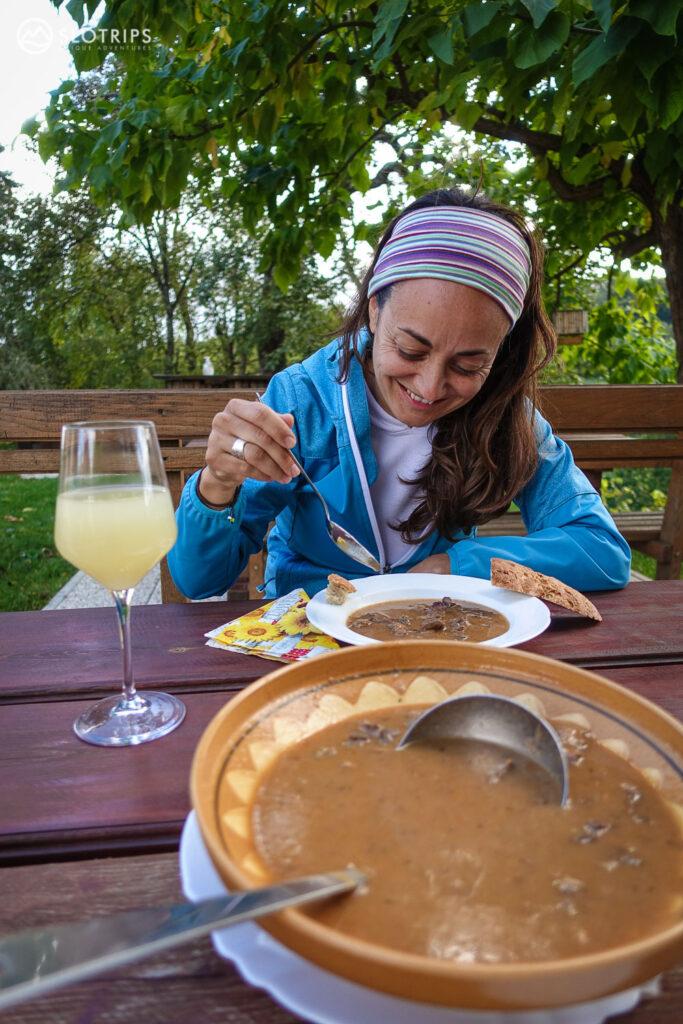
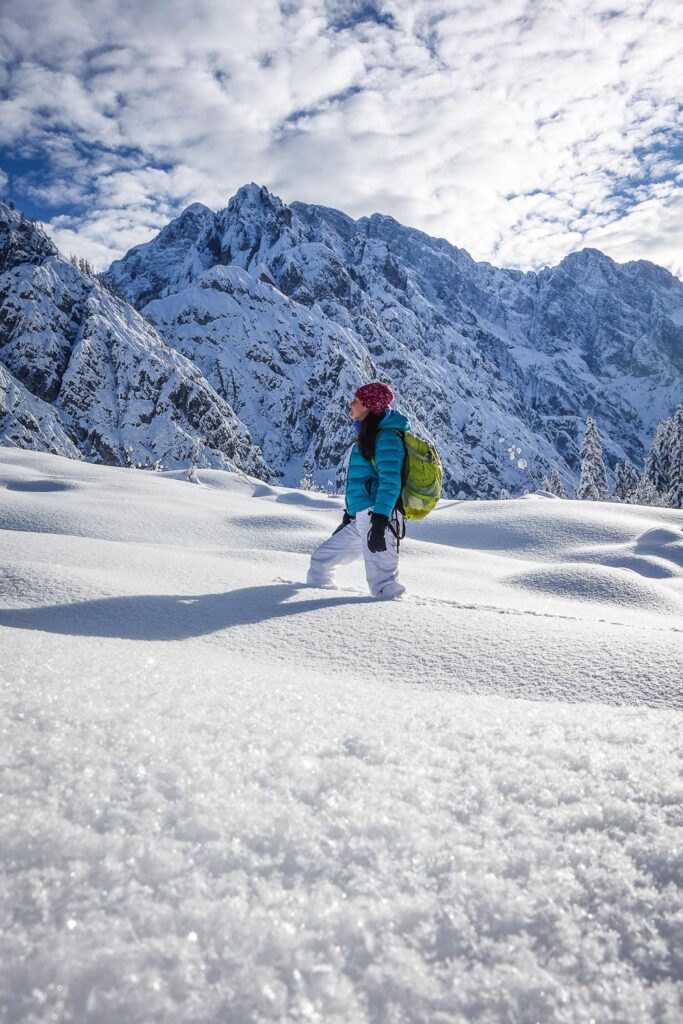
Weather forecasts and data
For detailed weather forecasts, radar images of precipitation, webcams, and more, we recommend checking the website of the Slovenian Environmental Agency.
All data in climate charts presented in this post was taken from their website as well. Source.
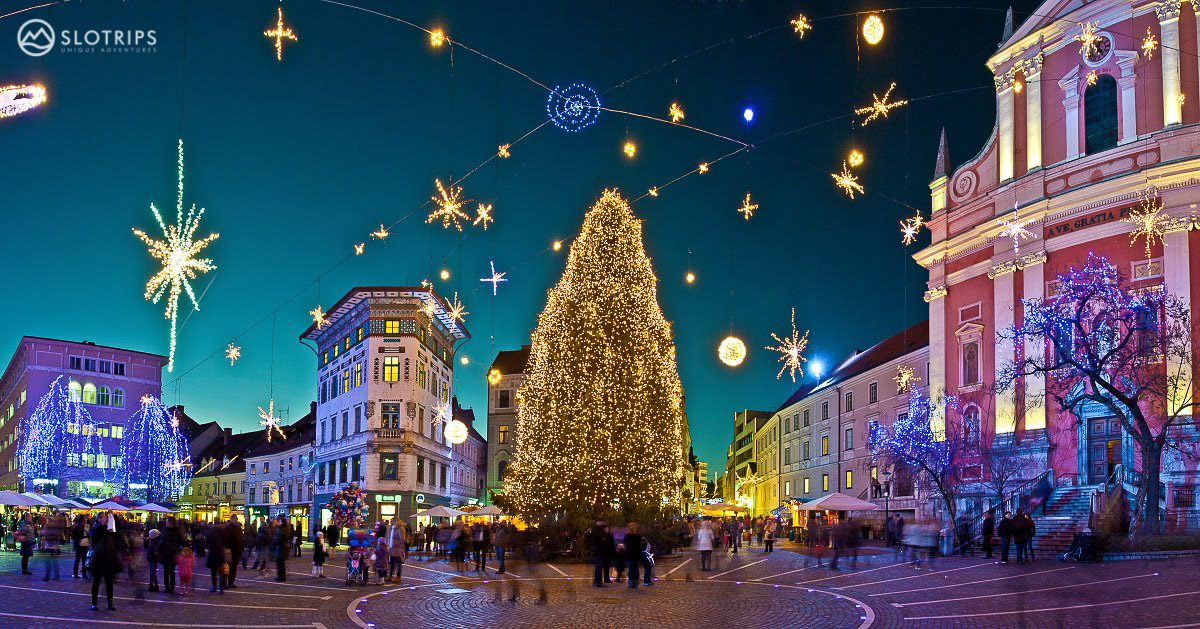
Photos by Slotrips, Luka Esenko and Jošt Gantar (STO)
About the Author:
Ian Middleton is a British writer and photographer, married to a Slovene. He divides his time between the UK & Slovenia. For more info visit his website.

